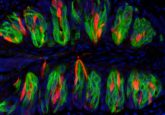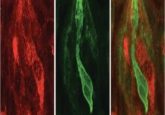Multitasking taste cell discovered in animal study

Scientists have discovered a new broadly responsive taste cell within mammalian taste buds.
A University at Buffalo (NY, USA) research team, led by Kathryn Medler, have successfully demonstrated the existence of a novel taste cell in mammalian taste buds, with the ability to detect sour, sweet, bitter and umami stimuli.
This study, which was recently published in PLOS Genetics, was not the first to consider the existence of broadly responsive taste cells, but they were the first to succeed in isolating and identifying these cells.
Our taste buds are critical to our survival, as they allow us to detect whether food is a good source of nutrition or potentially harmful. The study aimed to investigate how cells detect and signal the presence of different tastes.
There are three types of taste cells within taste buds: type I, which act as support cells; type II, which detect bitter, sweet and umami tastes; and type III, which detect sour and salty flavors. The newly identified cells are a subset of type III cells.
 Chromatography, a chef’s best friend?
Chromatography, a chef’s best friend?
As advances and new developments in chromatography allow the technique to become more precise, how is the technique enabling us to understand taste, and improve cooking?
The researchers used live cell imaging to investigate taste cells that had been isolated from an engineered mouse model to identify the novel cell. They discovered that in addition to responding to sour stimuli the cells use a separate pathway, a PLCβ signaling pathway, to respond to bitter, sweet, and umami stimuli.
Short-term behavioral assays revealed that these broadly responsive taste cells make a significant contribution to the taste-driven behaviors observed, and that the loss of the either the PLCβ3 in these cells or IP3R3 in type II cells caused similar behavioral defects.
The study’s findings provide an interesting new insight into how information is sent from our taste buds to our brain for processing. They also suggest that our taste buds are considerably more complex than previous research has suggested.
“Taste cells can be either selective or generally responsive to stimuli which is similar to the cells in the brain that process taste information,” commented Medler. “Future experiments will be focused on understanding how broadly responsive taste cells contribute to taste coding.”





